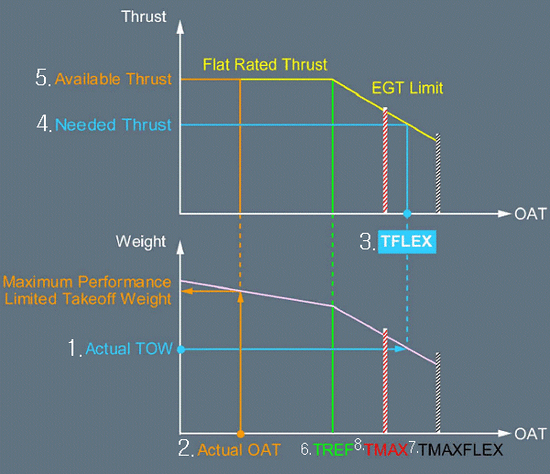Derated Thrust

Derated thrust refers to a takeoff configuration in which an engine is intentionally operated at less than its maximum certified thrust output. This practice is employed to reduce engine wear and extend engine life while still providing sufficient thrust for safe takeoff under the prevailing conditions.
The concept of derated thrust is commonly applied at airports where runway length, ambient temperature, pressure altitude, and aircraft weight allow for a lower power setting without compromising performance or safety margins. Regulatory authorities such as the FAA and EASA allow airlines to calculate these settings based on aircraft performance data, provided that climb gradients, obstacle clearance, and acceleration requirements are still met.
Derated thrust takeoffs are part of the broader category of reduced thrust operations and are distinct from the "assumed temperature" method. While assumed temperature takeoffs simulate hotter conditions to justify lower thrust settings, derated thrust involves using certified lower thrust limits predefined by the engine manufacturer. Both techniques are used to limit engine stress, reduce maintenance frequency, and improve long-term fuel economy.
This approach is especially beneficial for high-utilization fleets and is widely implemented in commercial jet transport operations, where cost control and engine preservation are prioritized alongside operational safety.
- Takeoff Performance
- Aircraft Engines
- Jet Engine Operations
- Thrust Management
- Engine Wear Reduction
- Fuel Efficiency
- Flight Performance Calculations
- Reduced Thrust Operations
- Engine Maintenance Practices
- Assumed Temperature Method
- Climb Performance
- Aircraft Systems Engineering
- Aircraft Operational Procedures
- Performance-Based Navigation
- Aviation Regulations
- FAA Standards
- EASA Guidelines
- Commercial Jet Operations
- Airline Fuel Policies
- Environmental Considerations
- Aviation Safety X
- ASXWiki
- Pages with math render errors
